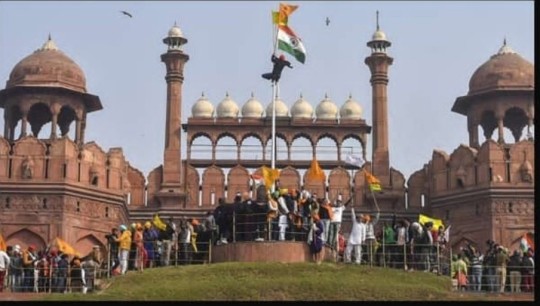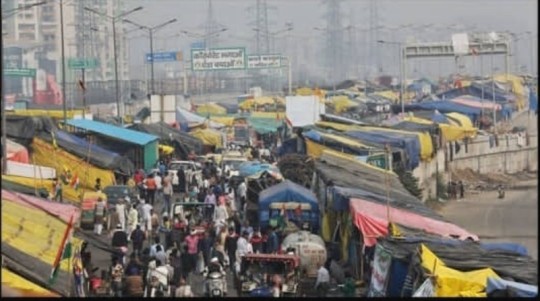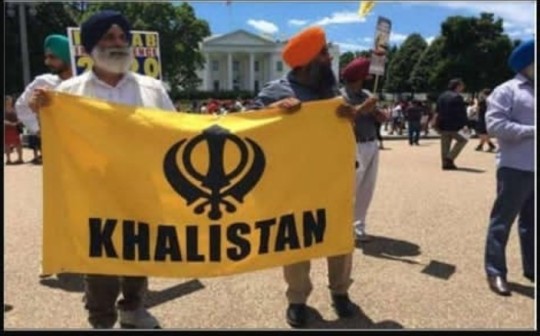Text
WHY THE FARM LAWS REPEAL HURTS INDIA IN THE LONG RUN?
1).Hurts millions of farmers

While a handful of motivated "farmers" were protesting in Delhi, millions of farmers across India had welcomed the laws. The repeal of the laws takes away their right to sell their produce where they wanted, and prevents them from raising their incomes.
2).Rewards violence

The protesting "farmers" in Delhi had blocked roads, engaged in violence & even attacked the Red Fort. The repeal of the laws rewards this behaviour, & will lead to similar protests going forward.
3).Hampers future reforms

The govt will find it hard to push through any major reforms in the coming years. Any reform will be met with large protests, knowing how the government is likely to capitulate before a violent mob.
4).Wasted Lives & money

Lives were lost, roads were blocked, property was destroyed, and thousands of crores of economic losses were incurred because of the laws. And now, it turns out it was all for nothing.
5).Hands a victory to opposition

Opportunistic opposition politicians had thrown their weight behind the protests. The repeal of the laws hands them an easy victory, and makes it look like they were in the right all along.
6).Emboldens global left

The global left, including newspapers, think-tanks, celebrities and other shadowy organizations had worked to get the laws repealed. And with this success, they'll be encouraged to interfere even more in India's affairs.
7).Emboldens Khalistanis

The Khalistan movement, thought dead for many years, has resurfaced, and made the Indian govt bow down to its demands. This major success will strengthen the movement, and make it take even bigger steps going forward.
The repeal of the farm laws is most likely a disaster, and India could pay the price for many years to come.
Thanks for reading ✌️
Jai Hind 🇮🇳
0 notes
Text
The Corps of Engineers of the Indian Army, also called the Sappers celebrated their Corps Day on 18 November. The Indian Army Corps of Engineers provides combat engineering support, develops infrastructure for armed forces and other defence organisations and maintains connectivity along the borders, besides helping the civil authorities during natural disasters. College of Military Engineering, Pune (CME) is the premier technical and tactical training institution of the Indian Army Corps of Engineers. The Corps consists of three groups of combat engineers, namely the Madras Sappers, the Bengal Sappers and the Bombay Sappers.

Sappers have a glorious history dating back to the mid-18th century. The Corps officially recognizes its birth as 1780 when the senior most group of the Corps, the Madras Sappers, was raised. Subsequently, the Groups of Bengal and Bombay Sappers were formed in their respective presidencies. These Groups were later merged on 18 November 1932 to form the Corps of Engineers. This day is celebrated as Corps of Engineers Day every year. The Corps of Engineers provides combat engineering support and develops infrastructure for the armed forces along our vast borders besides providing succor to the populace during natural disasters. These tasks are executed through four pillars of the Corps namely the Combat Engineers, the Military Engineering Services, the Border Roads Organisation, and the Military Survey of India.
0 notes
Text
National Epilepsy Day
In India, November 17 is observed every year as National Epilepsy Day to create awareness about epilepsy. Epilepsy is a chronic disorder of the brain characterized by recurrent ‘seizures’ or ‘fits’. The seizures are caused as a result of sudden, excessive electrical discharges in the neurons (brain cells). The condition can affect people at any age and each age group has unique concerns and problems.

According to the World Health Organization (WHO), about 50 million people have epilepsy across the world, out of which 80 percent of people are living in developing countries. Although epilepsy is treatable, yet three-fourths of affected people in developing countries do not receive the required treatment. In India, about 10 million people suffer from seizures associated with epilepsy.
For more info: https://www.nhp.gov.in/National-Epilepsy-Day_pg
1 note
·
View note
Text
HOW JAMMU & KASHMIR HAS CHANGED AFTER ABROGATION OF ARTICLE 370?

Terrorist incidents are down by 53%.

Terror Incidents
👉 13 months before Aug 2019 = 443
👉 13 months after Aug 2019 = 206
Stone pelting incidents are down by 59%.

Stone pelting incidents
👉 13 months before Aug 2019 = 703
👉 13 months after Aug 2019 = 310
Kashmir has been given parity with India with…
👉 890 Central laws applied
👉 205 state laws repealed
Domicile certificates issued to…
👉 55,931 Hindu & Sikh West Pakistan Refugees
👉 2,754 Valmikis
👉 789 Gorkhas
520 Kashmiri Pandits return to Kashmir to get jobs under rehabiltation package.
👉 2000 more to return by this year
J&K’s development has moved into the fast gear.

👉 3167 kms of roads built
👉 100% electrification
👉 100% Insurance coverage
Jammu & Kashmir is seeing massive infrastructure projects.

👉 World's highest railway bridge
👉 8.5 km long tunnel now ready
👉 Work on Jammu & Srinagar metro to start by 2025
J&K is seeing massive new education opportunities.
👉 IIT Jammu starts operating from own campus
👉 Work on AIIMS Jammu has begun
Article 370’s abrogation has transformed Jammu and Kashmir.
Here’s how Jammu and Kashmir has changed since then.
Thanks for reading.
Jaihindh
1 note
·
View note